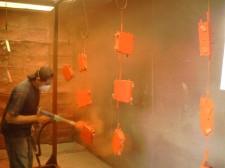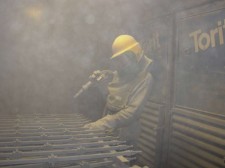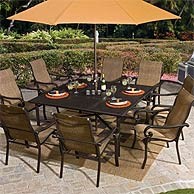1- Powder coatings can produce much thicker coatings than conventional liquid coatings without running or sagging
2- Powder coating production lines produce less hazardous waste than conventional liquid coatings
A hazardous waste is waste that poses substantial or potential threats to public health or the environment. There are four factors that determine whether or not a substance is hazardous:
- cause, or significantly contribute to an increase in mortality (death) or an increase in serious irreversible, or incapacitating reversible illness; or
- pose a substantial (present or potential) hazard to human health or the environment when improperly treated, stored, transported, or disposed of, or otherwise managed.
3- Powder coated items generally have fewer appearance differences between horizontally coated surfaces and vertically coated surfaces than liquid coated items
4-Powder coatings emit zero or near zero volatile organic compounds(VOC).
Volatile organic compounds (VOCs) refers to organic chemical compounds which have significant vapor pressures and which can affect the environment and human health. VOCs are numerous, varied, and ubiquitous. Although VOCs include both man-made and naturally occurring chemical compounds, it is the anthropogenic VOCs that are regulated, especially for indoors where concentrations can be highest. VOCs are typically not acutely toxic but have chronic effects. Because the concentrations are usually low and the symptoms slow to develop, analysis of VOCs and their effects is a demanding area
Why powder coat?
Powder coating produces a high specification coating which is relatively hard, abrasion resistant (depending on the specification) and tough. Thin powder coatings can be bent but this is not recommended for exterior applications.
The choice of colours and finishes is almost limitless, if you have the time and money to have the powder produced by the powder manufacturer.
Powder coatings can be applied over a wide range of thickness. The new Australian Standard, "AS/NZS 4506 - Thermoset powder coatings", will recommend 25 micron minimum for mild interior applications and up to 60 micron minimum for exterior applications. Care must be exercised when quoting minimum thickness because some powder will not give "coverage" below 60 or even 80 micron. "Coverage" is the ability to cover the colour of the metal with the powder. Some of the white colours require about 75 micron to give full "coverage". One of the orange colours must be applied at 80 micron.
Colour matching is quite acceptable batch to batch.
: Wide range of color selection
: High and low gloss, metallic’s, and clear finishes
: Environmentally friendly, no solvents, and no VOCs
: Very minimal waste





